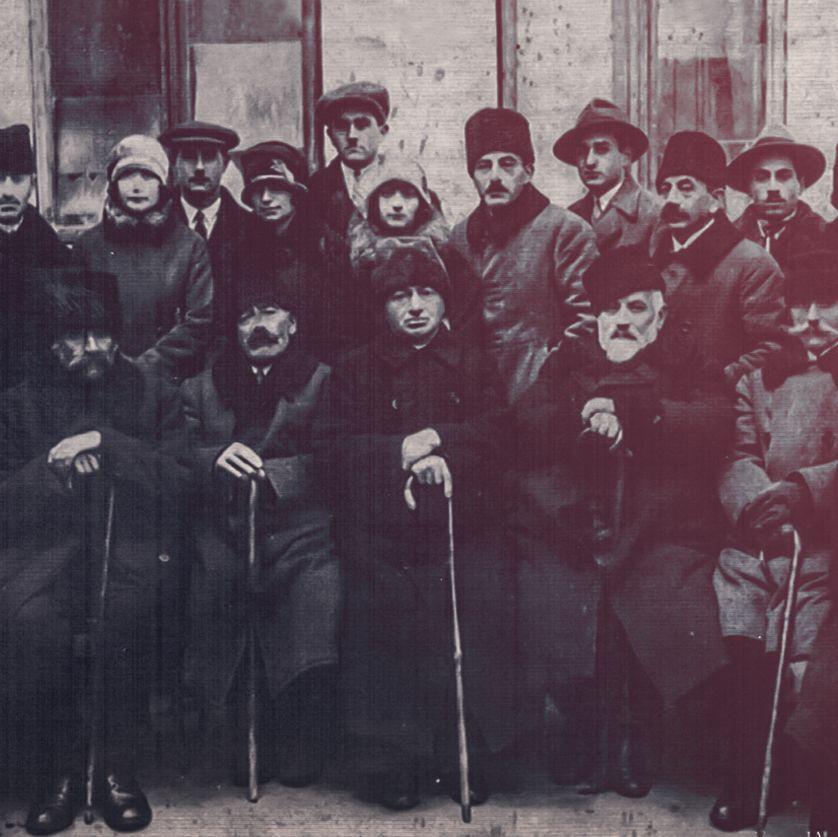Introduction
Project The Armenian Virtual Museum reflects and satisfies the need to collect Armenian relics and make them easily accessible to a wide range of interested parties. The collection consists of artifacts scattered all over Polish museums and libraries, as well as unique exhibits from family collections. In 1933, the Archdiocesan Museum of Armenians was opened in Lviv - the collection was exhibited in the Archbishop's Palace of the Armenian Chapter. The idea of expanding the collection, which guided the Armenian community, was not implemented due to the outbreak of World War II, the expatriation of Armenians to the present territory of the Republic of Poland, as well as the destruction and theft of the collection by the Soviets. The incomplete museum collection found its way to Polish museums and archives throughout the country. In 1999, the National Museum in Cracow presented a collection of Armenian relics at the exhibition entitled "Polish Armenians: Separation and Assimilation". It has been 23 years since that event. In a modern and innovative way, we want to bring you closer to the culture, history and heritage of Polish Armenians who have been living in the Republic of Poland for over 650 years. We invite you to take a virtual walk around our Museum.

From the 10th century, Armenians settled in Russian towns, which later became part of the Polish state. In the 1440s, Ruthenia with Lviv became incorporated, where there was already a relatively large Armenian colony, composed mainly of merchants and craftsmen. A little later, Armenians from Kamieniec Podolski and other towns also became Polish subjects. They came to these areas from Armenia, which in the past covered a much larger territory than today. Perhaps they moved from Ani, its medieval capital or Cilicia, where the Kingdom of Little Armenia existed until the end of the 14th century. They also came from various centers of the Armenian diaspora, which had arisen as a result of the defeats suffered by their homeland, which was invaded by powerful neighbors. Thus, they were emigrants from the Golden Horde, from the Crimean Khanate from the 15th century, as well as from Italian trading colonies on the Black and Azov Seas, especially from Kaffa and Tana. Then there were also migrants from some parts of the Turkish empire, e.g. from Moldavia, and also from Persia. At the beginning of the interwar period, a small group of Armenians from Turkey appeared in Poland - those who had survived the terrible massacres of the Christian population there during World War I. The last migration of several thousand Armenians to Poland took place in the late 1980s and in the following decade. It consisted of the inhabitants of Armenia, struggling with the effects of the earthquake and the Karabakh war, as well as Armenians from other republics of the former Soviet Union.
Among the many phenomena, worthy of mentioning in context of the history of Eastern civilization, perhaps the most astonishing is the fact that Armenia – continuously called the cradle of civilization – was the first country in the world where Christianity became the official state religion. It began at the start of the 4th century (301). This fact also had serious consequences for the evolution of art in these areas and the development of new forms based on the traditions of the art of the ancient state of Urartu, very strong influences of the art of the Persian Sassanids and close contacts with the art of Syria. The adoption of Christianity caused, above all, the need to build churches for the faithful and monasteries for the clergy. Most of the Christian temples preserved to this day or traces of them found, the latest catalog of which includes 460, were built between the beginning of the 4th century and the 7th century. These were mostly churches erected on a tetraconch plan with four apses or on a Greek cross plan, with a dome resting on squinches. Just as often, probably under the influence of Syrian architecture, starting from the 5th century appeared basilicas on square or rectangular plans. Structures shaped in this way were richly decorated with sculptures and bas-reliefs made of stone or stucco, placed around window openings, around portals, in the form of friezes, or with ceramic cladding filling the panels.
